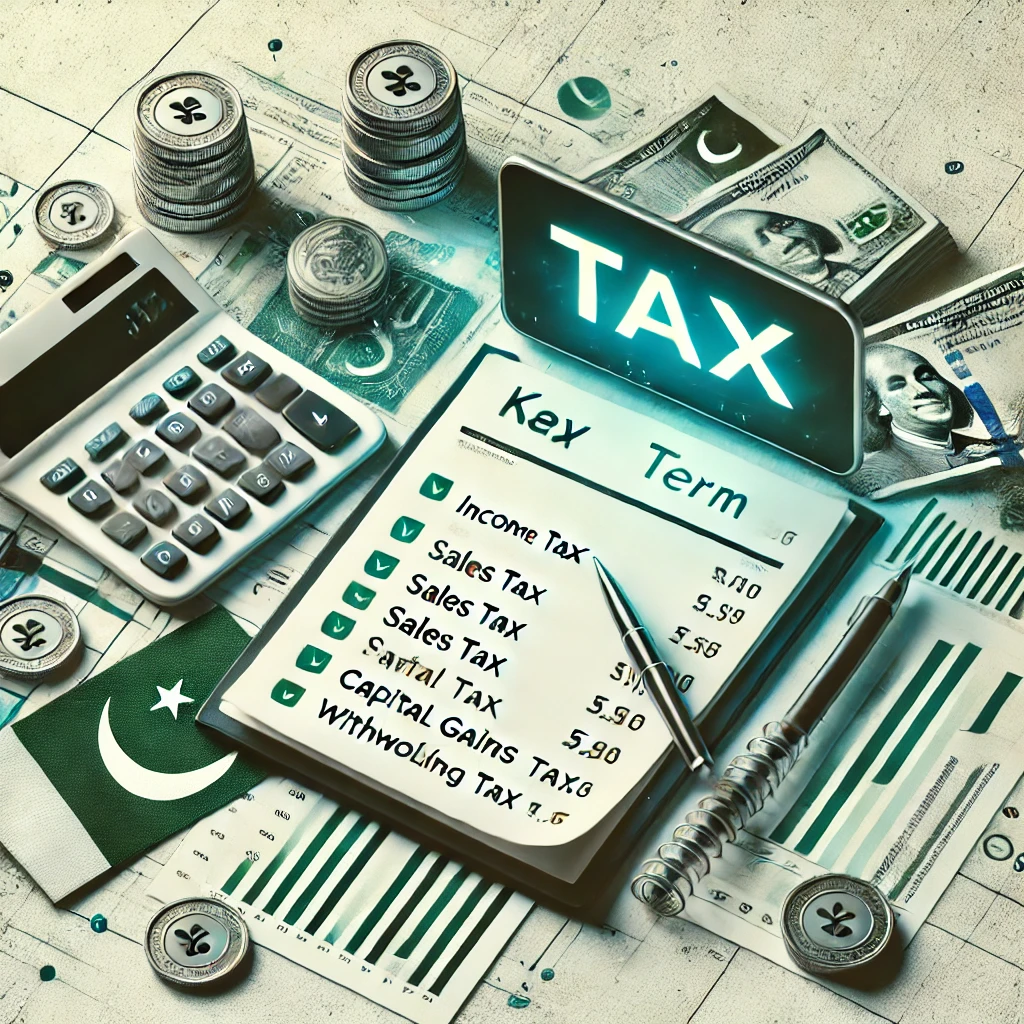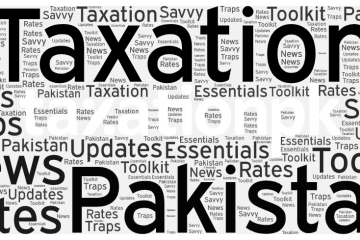Taxation in Pakistan is a multifaceted subject governed by comprehensive legal frameworks, primarily the Income Tax Ordinance, 2001 (ITO) and the Sales Tax Act, 1990 (STA). While these laws provide detailed definitions, many terms can be complex for the general public. This guide breaks down the most commonly used terms in Pakistan’s taxation system.
National Tax Number (NTN)
It is the unique identification number issued to the taxpayer by FBR on its registration. It is to be noted that having a national tax number is not an evidence of a person being a filer. It is also referred to as the reference number.
Active Taxpayer List (ATL)
It is the record of persons (both natural and legal) who have filed their income tax returns for the latest tax year. It is published on the 1st of March every year comprising the record of persons who have filed their income tax returns of the preceding year. Previously, it was updated every week but through SRO 1638(I)/2024, it was amended to be updated on daily basis. As a result, a person who has filed his return today shall be included in the list by tomorrow.
Active (Filer)
This term is used most frequently by the general public. It means the taxpayer whose name appears in the active taxpayers’ list issued by the Federal Board of Revenue (FBR). In simple words, a filer is a person who is registered with the FBR and has submitted income tax returns. Filers are subject to lower tax rates (e.g in buying and selling of property etc) as compared to non-filers.
Active (Late Filer)
This term is introduced through the Finance Act, 2024. It refers to taxpayers who submit their returns after the due date. They must pay a surcharge to regain their status on the active taxpayer list. Late filers are subject to higher tax rates as compared to filers.
Inactive (Non-Filer)
It may be categorized into two sub-classes. Firstly, persons who are registered with the FBR (possessing a national tax number) but do not file their income tax returns. Secondly, persons who are not altogether registered with the FBR and hence no record exists of them in the FBR database. Non-filers are subjected to higher tax rates than late filers and regular filers. Moreover, under the new Tax Laws Amendment Bill 2024, another term is coined for filers and non-filers i.e. eligible and ineligible persons respectively. Under the new law, ineligible persons will not be able to buy properties, and motor vehicles above 800cc.
Assessment
When a taxpayer voluntarily files his/her return, that return is considered to be an assessment by the taxpayer for his tax liability. Moreover, if the taxpayer fails to furnish the return, the Commissioner is empowered to make an assessment of the taxable income and the tax due thereon and that assessment is said to be the best-judgment assessment.
Taxable Income
It refers to the part of a person’s total income that is subject to taxation. It is the total income of a person reduced by any deductible allowances (Zakat etc). Taxable income is derived from salary, property (rental income), business, capital gains, and income from other sources (prize money etc).
Wealth Statement
Wealth Statement is the detailed declaration of a person’s assets, liabilities, and expenditures. Every resident taxpayer is required to furnish the wealth statement when filing his income tax return.
Section 7E (Deemed Income Tax)
It is the tax levied on deemed income of capital assets (immovable properties). It applies to mere ownership of the property irrespective of the fact that the concerned property has generated any income or not. The deemed income is calculated as 5% of the fair market value. This deemed income is then taxed at the rate of 20%. Simply, a 1% tax is levied on the fair market value of the asset. There are also certain exceptions to this tax such as self-owned house, capital asset belonging to Shaheed or dependents of shaheed, and self-owned agriculture land etc. Furthermore, the tax on deemed income was declared intra vires by the Sindh High Court whereas the Islamabad High Court declared it ultra vires to the constitution.
Income Tax
It is a direct tax levied on the taxable income of persons. Income Tax rates depend upon the annual earnings of the person. It is updated annually by the Finance Act. As of today, no income tax is levied on a person earning less than 0.6 million PKR a year. Income Tax returns by individuals must be submitted upon the conclusion of the tax year i.e. after 30th of June till 30th of September unless extended by FBR.
Withholding Tax (WHT)
Withholding Tax (WHT) is the tax that is deducted at source. For instance, employers deduct a portion of their employees’ salary as a withholding tax and so serve as the withholding agent for the FBR.
Advance Tax
It is the form of advance payment of the tax that will be payable by the taxpayer in his final tax liability. It is a supplementary tax collection system that is finally adjusted in the tax payable by the taxpayer (2010 PTD 1215). Though with certain exceptions (outlined in Section 147 of the ITO), every individual with the latest assessed taxable income exceeding 1 million rupees is liable to pay advance tax. Moreover, advance tax is also paid in the forms of cash withdrawals, sales/purchase/transfer of immovable property, and motor vehicle registration etc.
Super Tax
It is a charge levied on high-earning persons. Initially, it was introduced for the rehabilitation of temporary displaced persons. However, in the Finance Act, 2022, it was extended to every person whose income exceeds 150 million.
Capital Gains Tax
It is chargeable on gains arising from the disposal of capital assets. The capital gain is calculated as the difference between the sale consideration and the cost of the asset. Capital assets include property of any kind except stock-in-trade and moveable property held for personal use or by the taxpayer’s dependents. However, certain moveable properties (Section 38(5) of the ITO) fall under the category of capital assets. The tax rate on capital gains depends upon the holding period of the capital asset; the longer the holding period, the lesser the tax.
Token Tax
Token Tax is the tax levied on motor vehicles annually as a road usage tax. Nevertheless, lifetime token tax payment can be made for smaller vehicles. It is administered by provinces.
Sales Tax
It is often referred to as Goods and Services Tax (GST). It is a tax levied on the sale and supply of goods, services, and on imports. Sales tax on services is imposed by provincial revenue authorities. It is an indirect tax that is collected by businesses from consumers to be returned to the government. Sales tax returns are to be filed on a monthly basis.
Case Study: Tax Journey of Ammar
Ammar, a non-filer(unregistered in FBR), opens his restaurant named Cheezy in Lahore. He then registers himself and his restaurant as a Sole Proprietorship in FBR. Upon registration, NTNis issued to him. Let’s say, that after deduction of Zakat and any other deductible allowances from the total income, his taxable income becomes Rs 800,000 for the year. He assesseshis tax liability to be Rs 30,000 (15% of the amount exceeding 0.6 million). He then files his income tax return for the latest tax year along with the wealth statement at the FBR IRIS Portal. Ammar is now a filerand his income tax status will be shown as active in the active taxpayers list. He also pays salaries to his employees and so deducts withholding tax (at rates prescribed by the WHT Rates Card) from the amount paid. He becomes the withholding agent. As sales tax on services is a provincial subject, Ammar registers his business with the Punjab Revenue Authority. He then charges 16% sales tax on every taxable service availed by the consumer in cash or at the rate of 5% when paid digitally (debit/credit cards or mobile wallets).
Let’s consider Ammar, now a filer, purchases a house worth Rs 25 million. He will have to pay Rs 0.75 million (3% of the fair market value) in advance tax under Section 236K of the ITO. After holding the concerned house for 10 months, Ammar sells it for 30 million. The capital gain shall be 5 million. Ammar shall pay a capital gains tax of Rs 0.75 million (15% of the capital gain).




